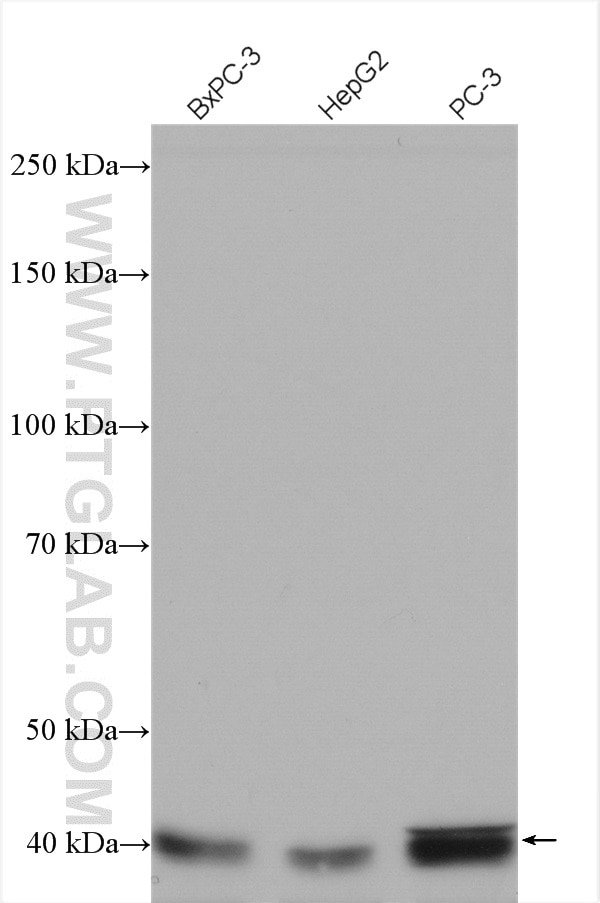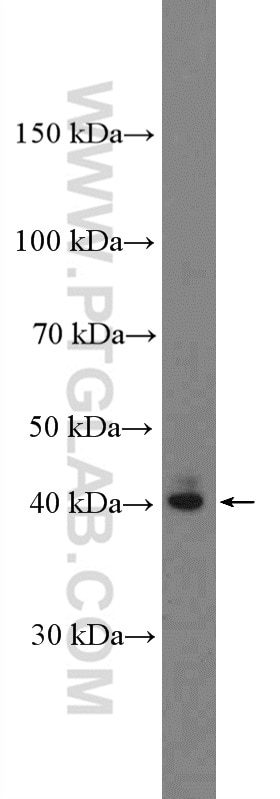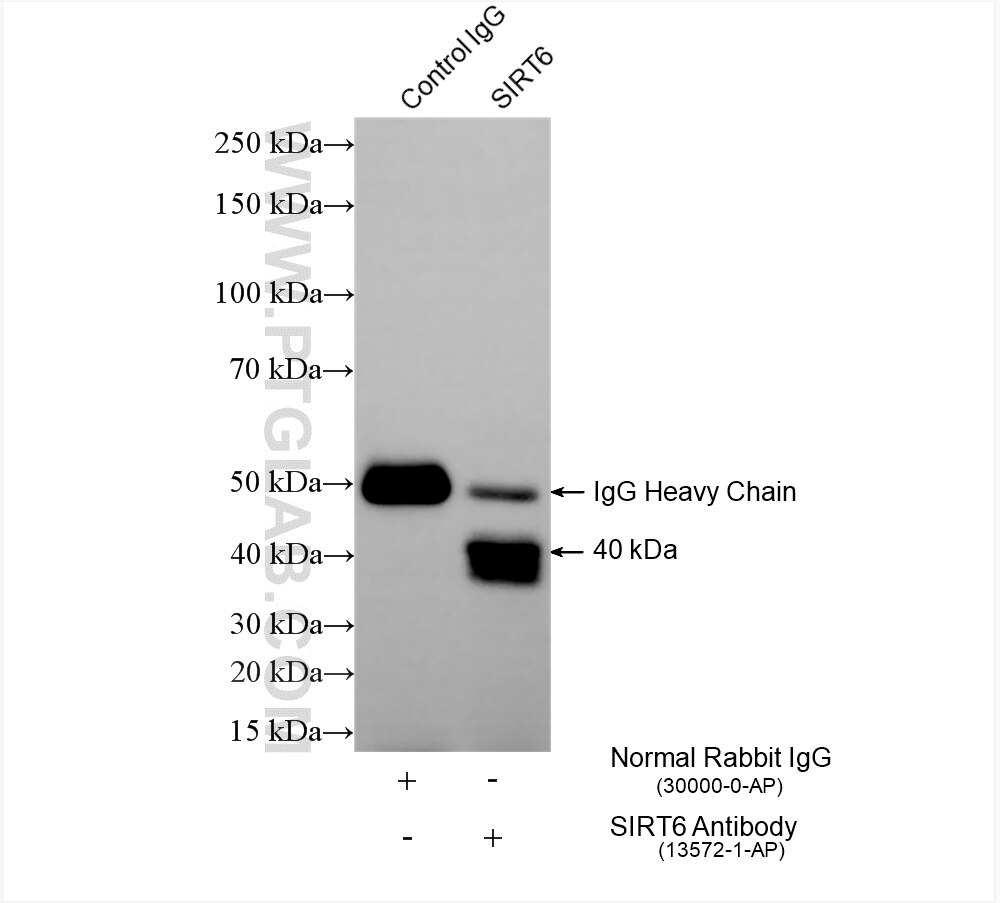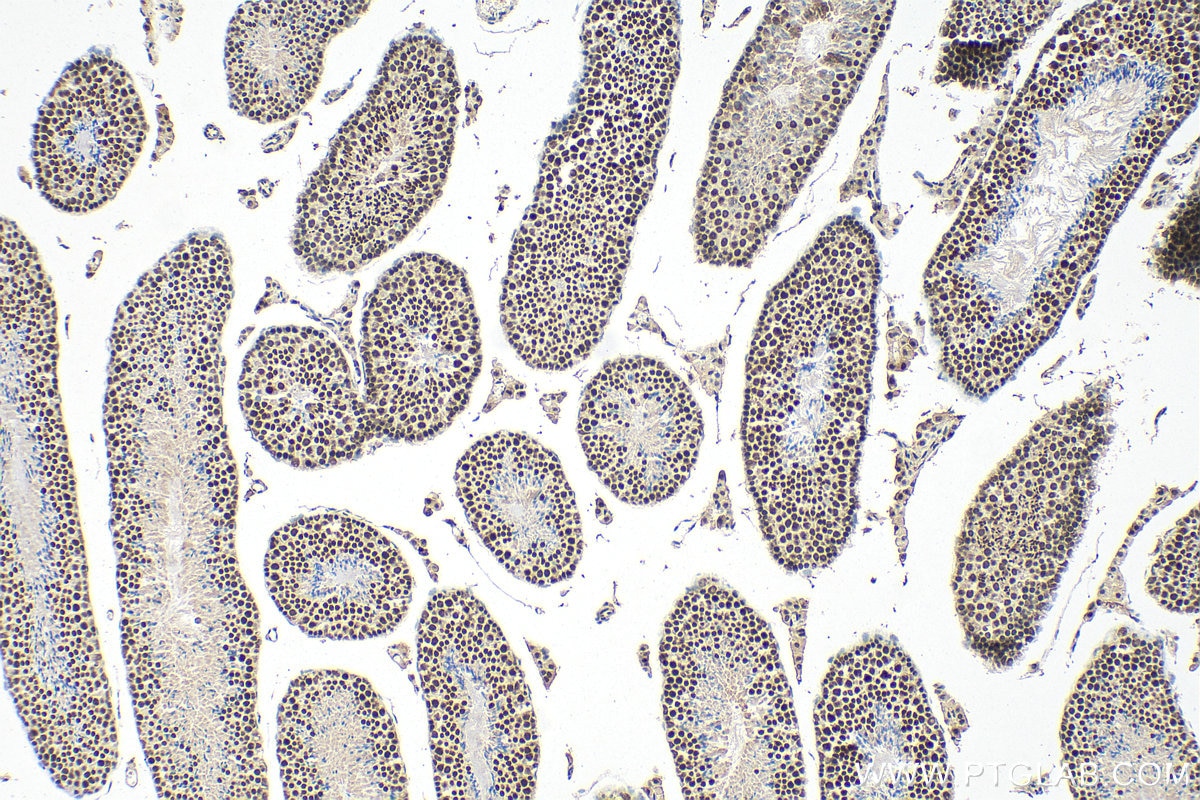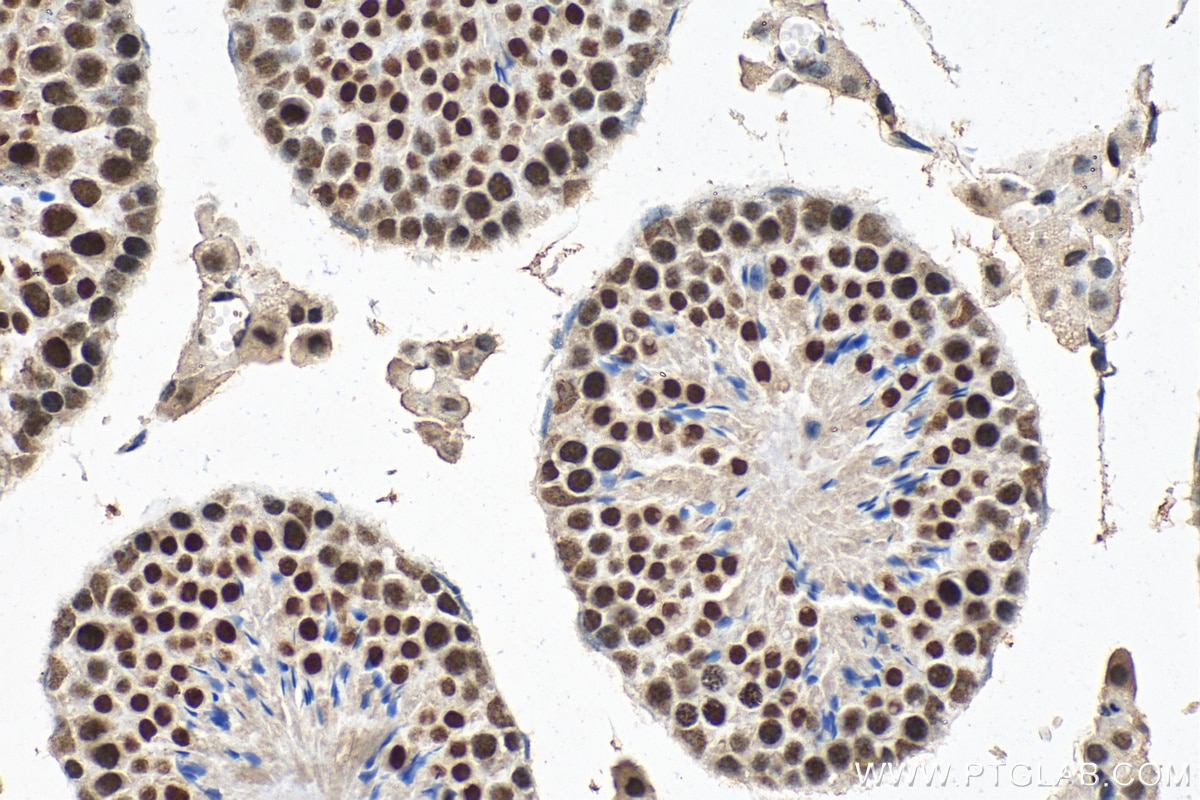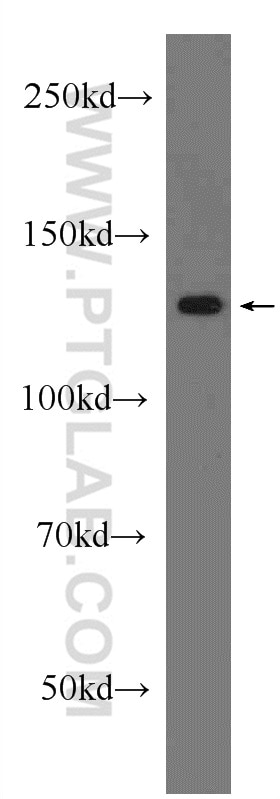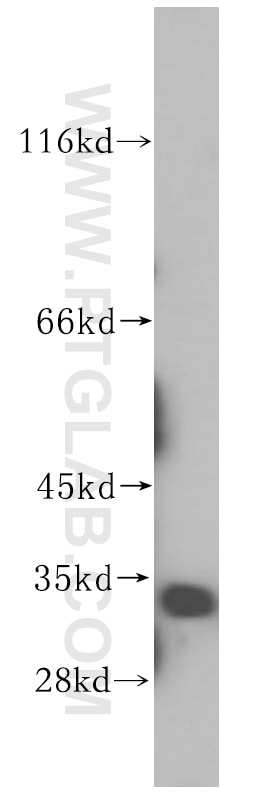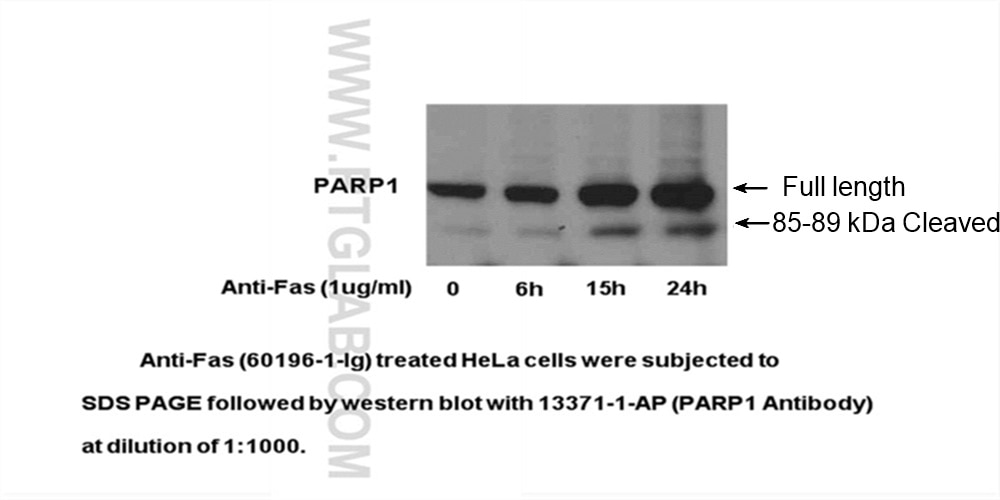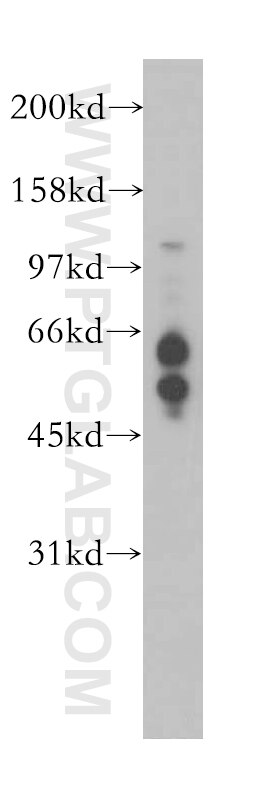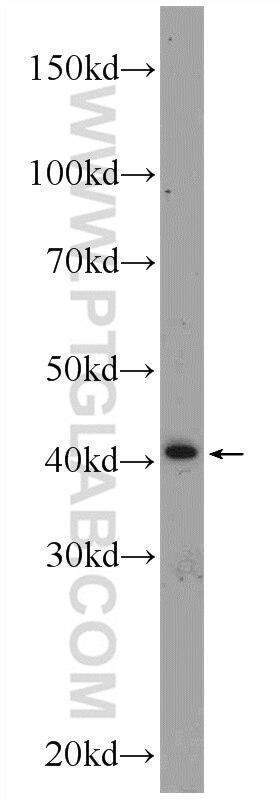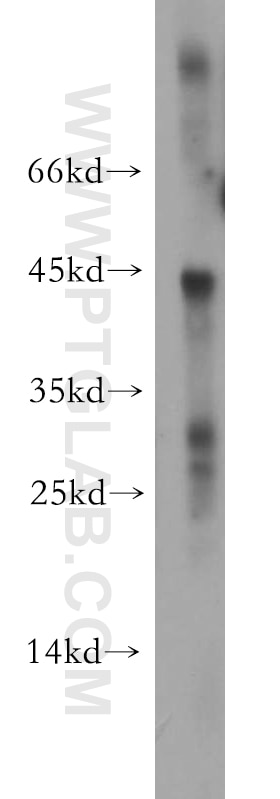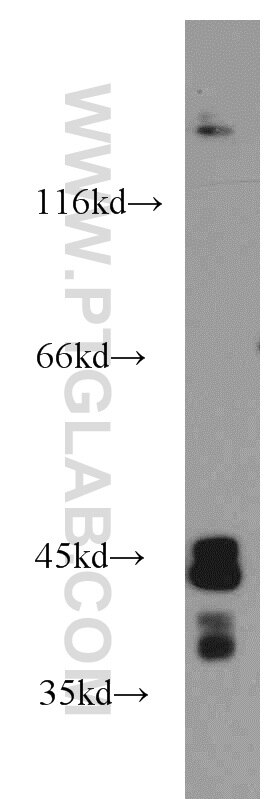- Phare
- Validé par KD/KO
Anticorps Polyclonal de lapin anti-SIRT6
SIRT6 Polyclonal Antibody for WB, IP, IHC, ELISA
Hôte / Isotype
Lapin / IgG
Réactivité testée
Humain, rat, souris et plus (1)
Applications
WB, IP, IF, FC, IHC, CoIP, ELISA
Conjugaison
Non conjugué
N° de cat : 13572-1-AP
Synonymes
Galerie de données de validation
Applications testées
| Résultats positifs en WB | cellules BxPC-3, cellules HepG2, cellules PC-3, tissu hépatique de souris |
| Résultats positifs en IP | cellules BxPC-3, |
| Résultats positifs en IHC | tissu testiculaire de souris, il est suggéré de démasquer l'antigène avec un tampon de TE buffer pH 9.0; (*) À défaut, 'le démasquage de l'antigène peut être 'effectué avec un tampon citrate pH 6,0. |
Dilution recommandée
| Application | Dilution |
|---|---|
| Western Blot (WB) | WB : 1:500-1:3000 |
| Immunoprécipitation (IP) | IP : 0.5-4.0 ug for 1.0-3.0 mg of total protein lysate |
| Immunohistochimie (IHC) | IHC : 1:250-1:1000 |
| It is recommended that this reagent should be titrated in each testing system to obtain optimal results. | |
| Sample-dependent, check data in validation data gallery | |
Informations sur le produit
13572-1-AP cible SIRT6 dans les applications de WB, IP, IF, FC, IHC, CoIP, ELISA et montre une réactivité avec des échantillons Humain, rat, souris
| Réactivité | Humain, rat, souris |
| Réactivité citée | rat, bovin, Humain, souris |
| Hôte / Isotype | Lapin / IgG |
| Clonalité | Polyclonal |
| Type | Anticorps |
| Immunogène | SIRT6 Protéine recombinante Ag4469 |
| Nom complet | sirtuin (silent mating type information regulation 2 homolog) 6 (S. cerevisiae) |
| Masse moléculaire calculée | 39 kDa |
| Poids moléculaire observé | 39-45 kDa |
| Numéro d’acquisition GenBank | BC028220 |
| Symbole du gène | SIRT6 |
| Identification du gène (NCBI) | 51548 |
| Conjugaison | Non conjugué |
| Forme | Liquide |
| Méthode de purification | Purification par affinité contre l'antigène |
| Tampon de stockage | PBS avec azoture de sodium à 0,02 % et glycérol à 50 % pH 7,3 |
| Conditions de stockage | Stocker à -20°C. Stable pendant un an après l'expédition. L'aliquotage n'est pas nécessaire pour le stockage à -20oC Les 20ul contiennent 0,1% de BSA. |
Informations générales
SIRT6, also named as SIR2L6, belongs to the sirtuin family. It is known to deacetylate H3K9, H3K56 and CtIP in vivo. SIRT6 regulates the expression of a large number of stress-responsive and metabolism related genes, promotes genomic stability and stimulates base excision and double strand break DNA repair(PMID: 20729089). By maintaining both the integrity and the expression of the mammalian genome, SIRT6 thus serves several roles that parallel Sir2 function(PMID: 20729089). In addtion, Sirt6-deficient animals develop normally for several weeks after birth, but succumb to an acute multi-organ degenerative syndrome that is uniformly lethal by one month of age(PMID: 19135889). This antibody is a rabbit polyclonal antibody raised against full length human SIRT6 antigen.
Protocole
| Product Specific Protocols | |
|---|---|
| WB protocol for SIRT6 antibody 13572-1-AP | Download protocol |
| IHC protocol for SIRT6 antibody 13572-1-AP | Download protocol |
| IP protocol for SIRT6 antibody 13572-1-AP | Download protocol |
| Standard Protocols | |
|---|---|
| Click here to view our Standard Protocols |
Publications
| Species | Application | Title |
|---|---|---|
Nat Commun Targeting USP47 overcomes tyrosine kinase inhibitor resistance and eradicates leukemia stem/progenitor cells in chronic myelogenous leukemia. | ||
Nat Commun Cordycepin prevents radiation ulcer by inhibiting cell senescence via NRF2 and AMPK in rodents. | ||
Redox Biol A new FGF1 variant protects against adriamycin-induced cardiotoxicity via modulating p53 activity. | ||
Oncogene Sirtuin-mediated deacetylation of hnRNP A1 suppresses glycolysis and growth in hepatocellular carcinoma. | ||
Stem Cells SIRT6 regulates osteogenic differentiation of rat bone marrow mesenchymal stem cells partially via suppressing the nuclear factor-kappa B signaling pathway.
| ||
Oxid Med Cell Longev Total Sesquiterpene Glycosides from Loquat Leaves Ameliorate HFD-Induced Insulin Resistance by Modulating IRS-1/GLUT4, TRPV1, and SIRT6/Nrf2 Signaling Pathways. |
